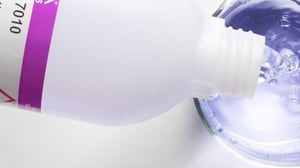 A vital step in getting accurate results when testing pH is calibrating your pH meter. But how do you know when calibration is necessary or why your readings are off?
A vital step in getting accurate results when testing pH is calibrating your pH meter. But how do you know when calibration is necessary or why your readings are off?
The technical team at Hanna Instruments compiled a list of tips to consider when you are calibrating your pH meter.
1. Always Read Your Manual
Calibration procedures change based on which meter is used. To best understand your specific meter, it is important to read the manual when you receive your pH meter.
To search for a product manual, please click here to visit the page.
2. Make Sure You Have the Right pH Buffers
 When performing a pH calibration it is important that the appropriate buffers are used.
When performing a pH calibration it is important that the appropriate buffers are used.
For example, if you want to measure something with a pH of 9 and you only calibrate your pH meter with pH 7 buffer you may not get an accurate measurement. This is because pH measurements are most accurate when calibration points bracket or are above and below the expected pH value.
You should also check your buffers expiration date and how long the buffer has been open for. Some buffers, like the pH 10 buffer, expire much sooner than the expiration dates once they are opened. This happens because carbon dioxide dissolves into the buffer over time, leading to accumulation of carbonic acid, which lowers the pH of the buffer.
We manufacture a wide range of buffer solutions for a variety of applications. pH buffer 4 and pH buffer 7 solutions are used for most applications. However, if you are measuring mostly in the alkaline scale, then buffer 7 and buffer 10 are likely to be the right choice. Some samples may even require alternate buffers, such as pH 3.0 buffer for acidic samples such as wine and other fruit juices.
3. Calibrate your Meter Often
For the most accurate measurement we suggest that you should calibrate your meter every time you measure a new set of samples.
Calibration can also help identify a problem with your electrode. Calibration helps identify problems with your electrode by comparing it to known buffers and calculating the slope and offset.
We suggest calibrating your meter upon first use, after a long period of storage, and when performing a new set of measurements.
4. Be Aware of your Slope and Offset
Your slope and offset have a significant impact on the condition of your electrode.
Hanna Tip: We recommend that you don't let the offset exceed ±30 mV and the slope percentage stays between 85-105%.
If you have a offset that's outside of the ideal range, this could mean that you either have a clogged junction or that the probe requires cleaning. If this occurs, try soaking the probe in cleaning solution and repeat the process of checking offset.
If your slope is bad, this could mean you have used expired or contaminated buffers. If this is the case, ensure that fresh buffers are used. Many Hanna meters will display both the slope and offset once calibration is complete. Some Hanna meters also come equipped with Cal Check™. This feature provides indicators to potential problems during the calibration process, based on previous offset and slope values, allowing you to quickly solve the problem.
To learn more about how to calculate your slope and offset please download the Calculating Your Slope and Offset Cheat Sheet or watch the video below.
Video: How to Check the Slope and Offset of a pH Meter (3 minutes)
5. Take Care of your pH Electrode
Electrodes play an important role in taking measurements and must be handled carefully.
pH electrodes should never be stored in distilled, reverse osmosis, or deionized water (DI) as this damages the sensing glass of the pH electrode and reference electrolyte. Instead, storing your electrode in proper storage solution can help to ensure that your electrode provides stable and highly responsive readings due to well-hydrated bulb. Instead of pure water, use a specially formulated storage solution, or an acidic buffer.
To learn more about proper care of your pH electrode please visit our knowledge base support section.
Hanna Tip: Electrode lifetimes may vary depending on temperature. Frequent measurements at higher temperatures limits the lifetime of pH electrodes. This means you will need to replace the electrode more frequently if testing samples at high temperatures.
If you found this blog post useful check out Caring for a pH, EC, or ORP Tester: The 5 Tips and Tricks for Home Users.
That's why we've dedicated our blog as a helpful resource for you to use! Catch up on the latest products, explore industry trends, discover testing tips, learn how to improve results, and more. Got questions? Email sales@hannainst.com.

